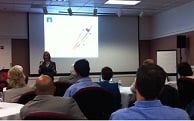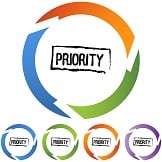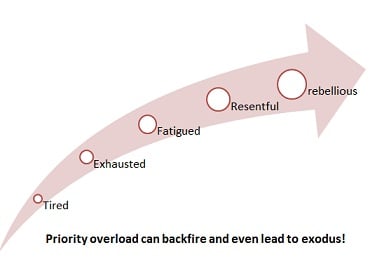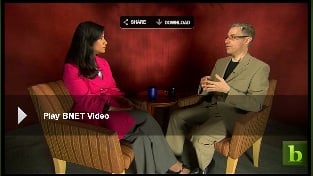Article by Anat Baniel, author of Move Into Life
 Normally, when we think about vitality, we think about people, about our own vitality and how we can augment it. However, when looking at our business, we can also gauge it in terms of its vitality. The Nine Essentials for Vitality are what the human brain requires to keep us energized, creative, healthy and full of life. Since people create business, the same principals apply the ‘brain’ of your business and can help your business move from surviving to thriving.
Normally, when we think about vitality, we think about people, about our own vitality and how we can augment it. However, when looking at our business, we can also gauge it in terms of its vitality. The Nine Essentials for Vitality are what the human brain requires to keep us energized, creative, healthy and full of life. Since people create business, the same principals apply the ‘brain’ of your business and can help your business move from surviving to thriving.
- Movement with Attention: Our brains are organized through movement. As we introduce new patterns of movement, combined with attention, our brains begin making thousands, millions and even billions of new connections. Not only is this true physically of our brains and bodies, it is also true of the movement you generate in your business. Encouraging movement in your business, and paying closer attention to the various elements of your business can bring the vitality of your business to a higher level.
- The Learning Switch: Learning occurs in the brain. However, for the brain to do its job, the “learning switch” needs to be turned on. It is important to cultivate a culture of learning within your business. By doing that you will get more vibrant, intelligent, and creative employees that can become a tremendous source for the success of your business.
- Subtlety: Your brain thrives on subtlety, on gentler, less-forceful, more-refined input. What we discover with this Essential is that subtlety generates new possibilities that can open up remarkable new possibilities. Learning how to listen for the subtleties in interactions with employees and business partners, learning to reduce the force in communications, can open up worlds of possibilities that weren’t there before.
- Variation: By introducing variation into the way you think, you will discover new ideas and solutions that wouldn’t otherwise have been possible. Even if everything in your business is “good enough,” or is going along “pretty well,” or maybe even “couldn’t be better,’ we encourage you to be on the lookout for opportunities to introduce variation to energize your business and to usher in ever greater creativity.
- Slow: Slow gets the brain’s attention and gives it time to distinguish and perceive small changes and form new connections. It is true that we live at the speed of light in this present age—there’s fast food, the fast track, fast turn-around, accelerated processing, instant printing, instant messaging, and the quick fix. When you intentionally create time for Slow for yourself and your employees, you change the culture of your business and allow for greater intelligence to come forth on the part of everyone.
- Enthusiasm: Enthusiasm is the amplifier by which you can turn up the volume, boosting the energy of everything you do, think, or feel. Enthusiasm can take the seemingly small and turn it into something new and magnificent. It is of utter importance for everyone in the business to develop their ‘enthusiasm muscle’. You’ll be amazed how becoming enthusiastic about ‘small’ stuff allows for the miraculous to occur.
- Flexible Goals: Goal setting is important for getting what we want from life. However, how we go about achieving our goals can become a real impediment by creating resistance to change. Rigid and forceful approach to goals limits our vision and creativity and gets us to miss opportunities and solutions. Holding your goals loosely gives you permission to adjust, invent and even exceed the initial goals.
- Imagination and Dreams: Imagining and dreaming can change your life as well as your experience in your business. You can invite your employees to write down their ideas, and dreams for the business. What they imagine for the business. Have them share it with each other and see the impossible becoming possible.
- Awareness: Awareness is different than attention, which was part of Essential #1. Attention is when we focus on something; it is possible to pay attention without being aware. Awareness is the highest level of human functioning. Instill a culture in your business that values awareness of self, others, and that which is occurring in the business. You will help develop a culture that values the greater good.
Your physical, mental, and emotional vitality is essential for your business vitality and success!
Thank you Anat!
Additional Resources
- Move Into Life, by Anat Baniel! The Nine Essential for Lifelong Vitality, you can learn more about the essentials and how to apply them in your life and to your business.
- For more information on how to vitalize your self and your career log onto www.anatbanielmethod.com









 Christine Heckart, CMO of
Christine Heckart, CMO of  Stop for a few minutes, and imagine what success "would" look like! It helps to have a time period in mind. Usually, I ask my participants to select 3 months or 6 months (after all we live in a rapidly changing work environment). Describe success vividly. See it. Hear it. Feel it. Unlimit yourself. Once you are excited about the vision of success that you create it, write it down, and refine it.
Stop for a few minutes, and imagine what success "would" look like! It helps to have a time period in mind. Usually, I ask my participants to select 3 months or 6 months (after all we live in a rapidly changing work environment). Describe success vividly. See it. Hear it. Feel it. Unlimit yourself. Once you are excited about the vision of success that you create it, write it down, and refine it. "At the center of the story is The Mighty Thor, a powerful but arrogant warrior whose reckless actions reignite an ancient war. Thor is cast down to Earth and forced to live among humans as punishment. Once here, Thor learns what it takes to be a true hero and ends up protecting humans when the most dangerous villain of his world sends the darkest forces of Asgard to invade Earth."
"At the center of the story is The Mighty Thor, a powerful but arrogant warrior whose reckless actions reignite an ancient war. Thor is cast down to Earth and forced to live among humans as punishment. Once here, Thor learns what it takes to be a true hero and ends up protecting humans when the most dangerous villain of his world sends the darkest forces of Asgard to invade Earth." I couldn't have said it any better. "When everything is a priority, nothing is a priority" said my client today as I was shadowing him in order to better understand his organization's work process and tailor our training programs accordingly. Shadowing is such an insightful exercise. It allows us to take a look at what is under the hood; the nuances that make each work environment unique. It is a great learning for everyone involved; the observer, the one being observed, and everyone around them.
I couldn't have said it any better. "When everything is a priority, nothing is a priority" said my client today as I was shadowing him in order to better understand his organization's work process and tailor our training programs accordingly. Shadowing is such an insightful exercise. It allows us to take a look at what is under the hood; the nuances that make each work environment unique. It is a great learning for everyone involved; the observer, the one being observed, and everyone around them.

 As the deadline approaches for completing the manuscript for the Accomplishing More With Google Apps book, I needed to take some drastic measures to stay on track. One of them was to take two whole days out of my busy schedule and work uninterrupted on writing and editing.
As the deadline approaches for completing the manuscript for the Accomplishing More With Google Apps book, I needed to take some drastic measures to stay on track. One of them was to take two whole days out of my busy schedule and work uninterrupted on writing and editing. I belong to this organization (its name to remain anonymous) and it was time to renew my membership recently. I was asked to fill out the membership application again (same application that we filled out last year). Being the productivity and efficiency evangelist that I am, I couldn’t “digest” that request very well. So I objected and questioned why we would be asked to submit the same information again! Shouldn’t we all be focused on doing work that has some purpose after all?
I belong to this organization (its name to remain anonymous) and it was time to renew my membership recently. I was asked to fill out the membership application again (same application that we filled out last year). Being the productivity and efficiency evangelist that I am, I couldn’t “digest” that request very well. So I objected and questioned why we would be asked to submit the same information again! Shouldn’t we all be focused on doing work that has some purpose after all?


